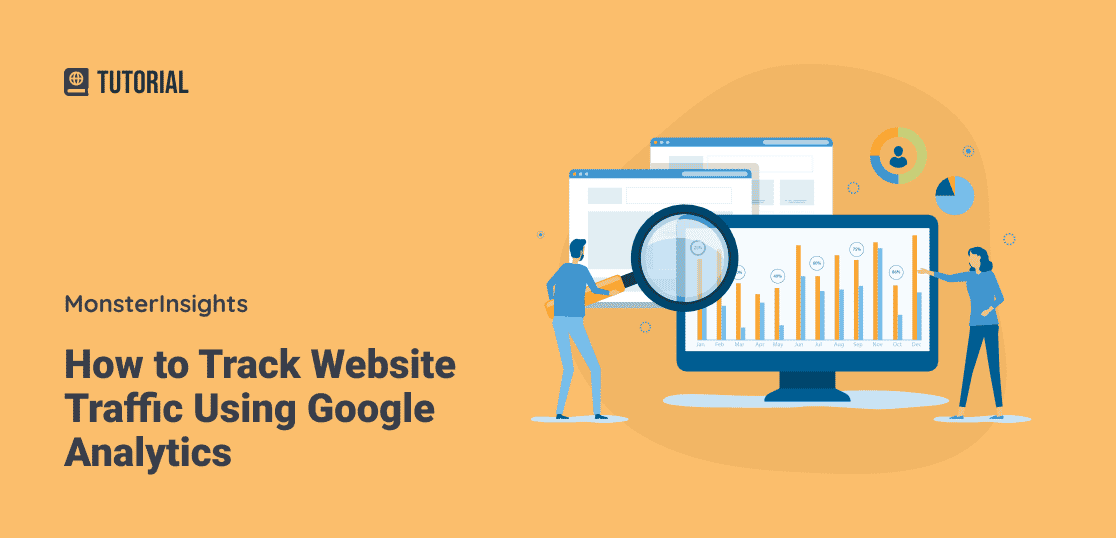Debunking What Is Not Considered a Source in Google Analytics by Default
Debunking What Is Not Considered a Source in Google Analytics by Default
Blog Article
Using the Full Possible of Google Analytics for Business Growth
In the world of digital service strategies, Google Analytics stands as a stalwart device for organizations seeking to navigate the complexities of online information. As services make every effort to make informed decisions and maximize their on the internet visibility, the question arises: How can one absolutely unlock the full capacity of Google Analytics to drive company growth and achieve strategic purposes?
Setting up Google Analytics Account
Setting up your Google Analytics account is a vital initial step in efficiently tracking and evaluating information for your service development. To begin, go to the Google Analytics internet site and check in with your Google account. Next off, click on "Beginning for totally free" and adhere to the triggers to establish up your account by giving details concerning your web site, such as the name, URL, sector classification, and reporting time area.
After finishing these actions, you will get a monitoring ID, which is a special code that you require to include in your internet site. This code allows Google Analytics to collect information and generate records based upon the activity occurring on your website. If you are making use of a platform like WordPress., you can add this tracking ID manually to your site's HTML code or utilize a plugin.

Understanding Key Metrics

Web Traffic Sources: Understanding where your internet site web traffic is coming from (direct, natural search, social networks, recommendations) helps in customizing your advertising strategies to concentrate on channels that drive the most site visitors.
Bounce Rate: This metric indicates the percent of site visitors that browse away from your site after checking out just one web page - What Is Not Considered A Source In Google Analytics By Default. A high bounce rate might indicate issues with site use or web content relevance
Conversion Price: Tracking the percent of visitors that finish a desired activity, such as making a purchase or authorizing up for a newsletter, is crucial for assessing the effectiveness of your internet site in attaining service goals.
Pageviews: Keeping an eye on the variety of times each page on your site is watched offers understandings right into popular web content and customer interaction levels.
Executing Personalized Tracking
To boost the deepness of insights collected from Google Analytics, companies can benefit considerably by integrating custom-made monitoring methods customized to their certain objectives. Customized tracking enables companies to track distinct information factors that are not captured by default in Google Analytics. By executing customized tracking, firms can acquire a much more thorough understanding of customer actions, conversion patterns, and various other vital metrics that are essential for making notified business decisions.
One usual approach of personalized tracking is setting up event tracking to keep track of specific user interactions on a web site, such as click buttons, video clip views, or downloads. This makes it possible for organizations to review the performance of their website elements and advertising projects more exactly.
Additionally, services can produce custom measurements and metrics to track and evaluate data that Check This Out is specific to their market or service design. As an example, an e-commerce company might establish custom-made monitoring to check the performance of various product groups or customer segments.
Assessing Conversion Paths
By leveraging the insights obtained from custom tracking approaches, organizations can currently concentrate great post to read on examining conversion courses to further refine their understanding of individual habits and optimize their conversion strategies. Evaluating conversion courses includes taking a look at the sequence of actions users take in the past finishing a preferred activity, such as signing or making an acquisition up for a solution. By diving right into the conversion courses within Google Analytics, companies can determine common paths that bring about conversions, in addition to any kind of traffic jams or drop-off points that may prevent the conversion procedure.
Via the analysis of conversion courses, companies can obtain useful insights into the effectiveness of their website layout, material, and contacts us to activity. This data can help businesses make informed decisions regarding where to designate sources for optimal effect on conversion rates. By understanding the numerous paths users tackle their journey to conversion, companies can customize their advertising and marketing methods to better overview individuals through the conversion channel and eventually improve their total conversion prices.
Utilizing Advanced Attributes
Harness the complete potential of Google Analytics by discovering its innovative features to improve your business's data-driven decision-making capacities. Customized records allow you to tailor the data presented to meet your details service requirements and objectives.

Furthermore, progressed segmentation lets you analyze different parts of your website's traffic to recognize trends, chances, and patterns. By segmenting your target market based on different requirements like demographics, actions, or traffic sources, you can better understand their preferences and tailor your advertising approaches appropriately. Leveraging these advanced attributes in Google Analytics can provide beneficial understandings that drive notified decision-making and eventually add to your service's growth.
Final Thought
In final thought, using the complete possibility of Google Analytics for business development includes establishing an account, comprehending vital metrics, implementing customized monitoring, examining conversion courses, and making use of sophisticated functions. By utilizing these strategies effectively, companies can acquire valuable understandings into their internet site efficiency, customer behavior, and conversion prices. This data-driven strategy can help organizations make notified decisions, enhance their online existence, and inevitably accomplish sustainable growth.
As companies strive to make informed decisions and enhance their on the internet visibility, the question occurs: How can one absolutely open the full capacity of Google Analytics to thrust company growth and achieve strategic purposes?To enhance the depth of insights collected from Google Analytics, organizations can profit dramatically by integrating custom monitoring techniques tailored to their specific objectives. Customized tracking permits organizations to track distinct information points that are not recorded by default in Google Analytics. By delving into the conversion courses within Google Analytics, services can determine typical routes that lead to conversions, as well as any type of traffic jams or drop-off points that may impede the conversion procedure.
In final thought, using the full potential of Google Analytics for service development involves establishing up an account, understanding key metrics, executing personalized monitoring, evaluating conversion courses, and utilizing innovative functions.
Report this page